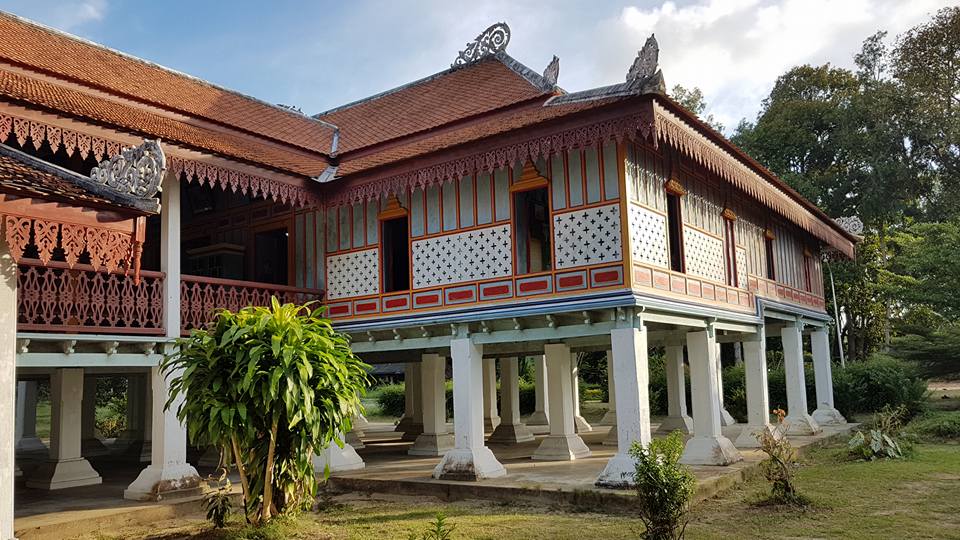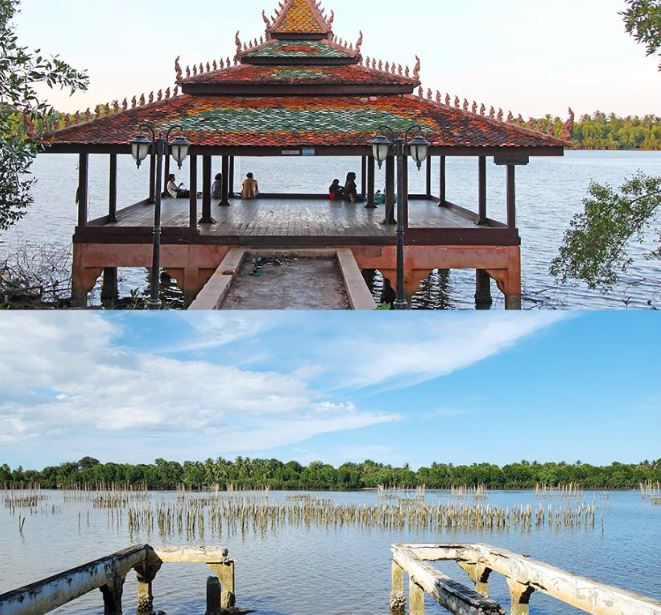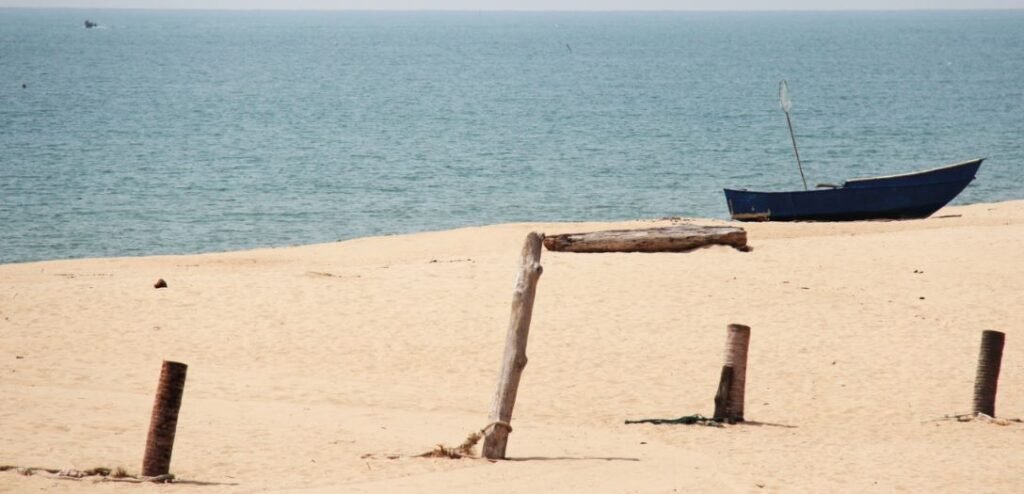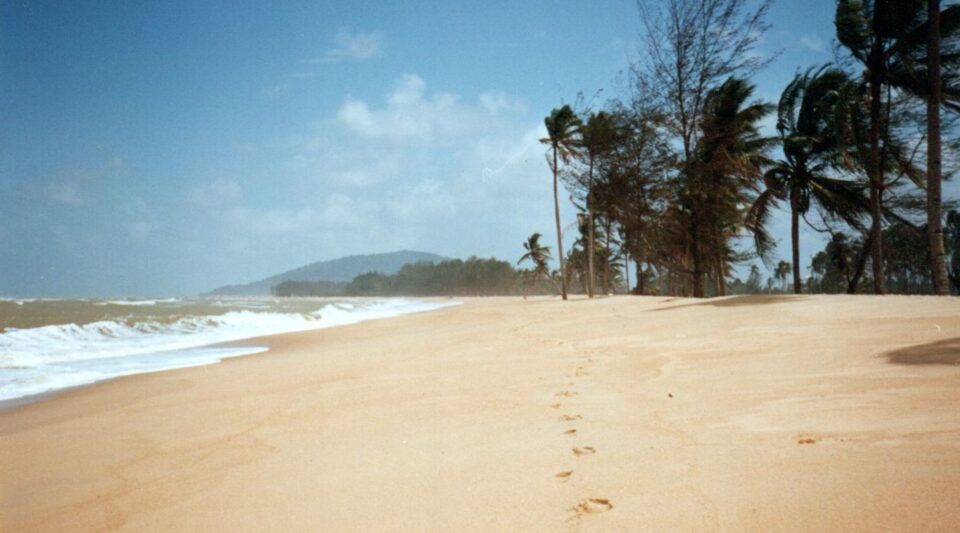The fourth and easternmost province in Thailand’s deep south, Narathiwat is bounded to the east by Malaysia and to the south by the Gulf of Thailand. The coastal province, which sprang out of fishing settlements near the Pak Bara River’s mouth, is now renowned for its multi-cultural beauty, abundance of natural beauty, and regional cuisines.

Wat Chon Thara Singhe, a Buddhist temple in Tak Bai that marks the border between Thailand and Malaysia, is the excellent place to start a trip. The ancient temple transports you back to 1909, when the Kingdom of Siam gave the United Kingdom four provinces in northern Malaysia.
While driving a party of Thai tourists to Wat Chonthara Singhe in Narathiwat, a local driver and guide remarks that Thailand ought to have received more territory when the Siamese and British discussed the divide.
“At that time, the Siamese were invited by the British to a meeting in the Kelantan jungle, but they were unable to go. They fell asleep at this temple because they were so inebriated.The local guide explains that the British defined the area where the Siamese were expelled as belonging to Siam, and everything outside of that was under British protection.
That’s not a bad anecdote to accompany a trip to the monument. On the other hand, the truth comes in many forms, as you will see when exploring the temple.

In 1873, Wat Chonthara Singhe was founded.
The rest can be inferred.The Siamese argued that the region near Wat Chon Thara Singhe belonged to Siam during negotiations for the Anglo-Siamese Treaty of 1909, which would partition the land into Northern Malaysia and Southern Thailand. The Buddhist temple had argued that this was, in fact, Siam, and both parties had come to this conclusion. Visit a modest temple museum to see a replica of the treaty that was signed on March 10, 1909 in Bangkok by Prince Devawong Varoprakar and Ralph Paget, the representatives of Siam and Great Britain.
The historical structure that formerly housed King Rama VI of Siam on his journey to Narathiwat in 1915, as well as the mural paintings, make the temple well worth visiting.Narathiwat was a key stop on the Maritime Silk Route and a part of the long-lost Patani empire. It drew traders, monks, and explorers from all over the world who were looking for wealth, excitement, and love. The ethnic diversity of the coastal province has increased over time, and its citizens’ respective religions are represented by a Chinese shrine, a Muslim mosque, and a Buddhist temple.

The Wadil-Husen Mosque must be visited.
The Wadil-Husen Mosque, also referred to as the “300 Years Old Mosque,” was constructed about 1624 and continues to summon Muslims to prayer. The mosque, which is entirely made of ironwood, incorporates a number of Chinese, Thai, and Malay architectural elements.
The craftsmanship is among the greatest in Narathiwat, with its excellent carvings, entry stairs, carved wooden doors and windows, calligraphy, and decorating.If you leave the Wadil-Husen Mosque feeling motivated, you should definitely visit the Islam Heritage Museum and Quran Learning Center. The museum, which is about 15 minutes’ drive from the old mosque, has a huge collection of antiquated Arabic and Quranic manuscripts.
Papyrus and parchment are both used to write some of the Quran’s texts. The Qurans in this collection, which range in age from 600 to 1000 years, were brought from every country where Islam was practiced, including Malay Nusandara, India, Persia, Egypt, Yemen, Spain, Morocco, and Uzbekistan.

The lovely beaches and long, ample shoreline of Narathiwat are a blessing; goats and locals share the bare stretch of golden sand. Since the province originated as a fishing community, coastal fishing is currently flourishing and providing the freshest fish to Narathiwat cooks and eateries. You may occasionally notice kids gazing in fascination and excitement as a kolae, a traditional and vibrant fishing boat, approaches the beach.
The Narathiwat Municipal Market, where local fishmongers work for the day’s catches, is the ideal location to discover the best fish and inspiration. Small alleys selling locally produced food make it a delightful area to meander through. Learn about the area meat, fish, fruits, and vegetables as well as what’s in season and what to order at nearby restaurants.

In the heart of Narathiwat, a number of eateries are tucked away along the bank of the Bang Nara River. Popular delicacies on the menu include shrimp and chicken stew in turmeric soup, smelly beans, and gaeng som pla (a sour and spicy yellow curry).
Seafood Ho Mok (steamed seafood curry) and a variety of fish dishes are prepared in Thai and Halal kitchens at the Rim Nam restaurant. Mangkorntong, the best Chinese restaurant in town, is the place to go if you’re craving chicken meals or deep-fried fish with delectable salad on top. If you’re traveling from outside the area to see Wat Chon Thara Singhe in Tak Bai, reserve a table at Nat Phop Yung Thong for lunch and treat yourself to the best southern cuisine Narathiwat has to offer.
Order the salted threadfin dish; it’s a specialty of Narathiwat.Where do folks in Narathiwat go when they want to take a walk in the woods? The Sirindhorn Peat Swamp Forest, which lies about 26 kilometers south of the town of Narathiwat, contains 66,000 acres of peatland with a high level of biodiversity. It provides a safe refuge for several mammal, bird, fish, and amphibian species as well as fish for the nearby populations. To enjoy this peatland, you don’t have to be a microbiologist or a forager. From the visitor center, boardwalks make their way across the pond to the evergreen forest’s interior, where beauty, mystery, and tranquility coexist.
If you do
Between Narathiwat and Bangkok (Don Mueang), Thai AirAsia offers flights.




